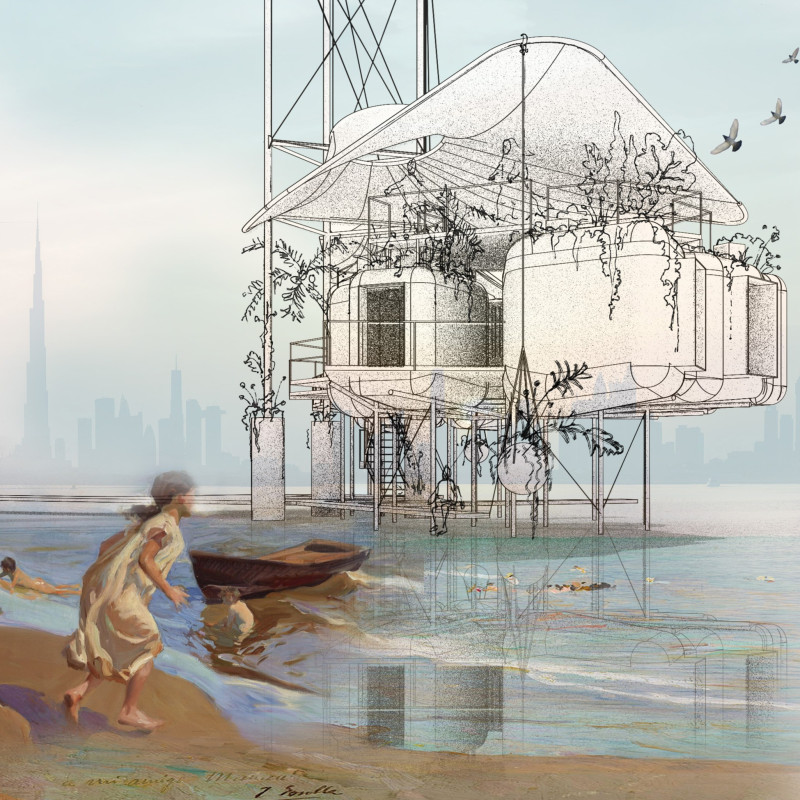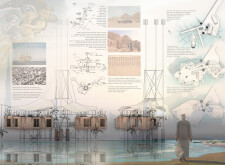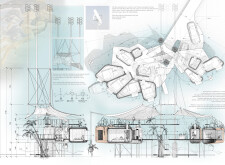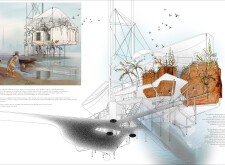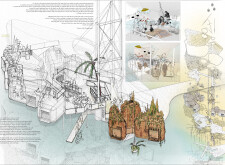5 key facts about this project
### Overview
Located in Dubai, the House of the Floating Sand is a conceptual residential project that integrates traditional Middle Eastern architectural elements with modern design principles. The intent is to create a habitat that coexists with its aquatic surroundings while providing contemporary living conditions. This project seeks to establish a relationship between built environments and natural landscapes, thereby enriching the user experience.
### Spatial Strategy and Structural Design
The project features a multi-level layout elevated above the water, supported by a network of 30-meter steel pylons engineered for stability against environmental forces such as wind and waves. The configuration is organized into three interconnected zones, enhancing fluidity and communication among living spaces through walkways. The design incorporates modular housing units constructed from prefabricated elements, allowing for adaptability and transportability. Each unit is designed to integrate natural vegetation, which augments aesthetics and contributes to air quality.
### Materiality and Sustainability
The selection of materials is pivotal to the project's sustainable ethos. Structural elements utilize steel for durability, while tensile fabric serves as a lightweight roofing solution that minimizes solar heat gain and contributes to an inviting interior atmosphere. Glass is employed in facade components to optimize views and continuity with the surroundings. Precast concrete units ensure consistency and structural integrity, and natural materials like wood are incorporated in decorative features and vegetation planters.
Sustainable practices are further reinforced through the integration of solar panels, enhancing energy efficiency. The design promotes community engagement by featuring a central area intended for social interaction, fostering a sense of community among residents. By honoring traditional architectural motifs within a contemporary framework, the project aims to maintain cultural continuity while addressing future urban living challenges.


